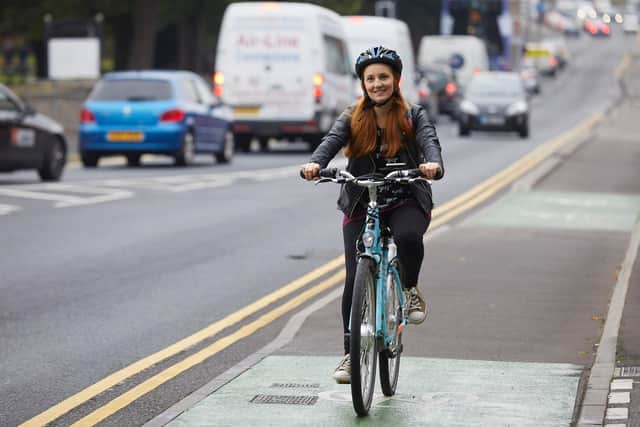These areas of Leeds will be getting new cycle lanes as West Yorkshire given £10m in funding
and live on Freeview channel 276
The West Yorkshire Combined Authority has secured an additional £10.053 million from the Government’s Active Travel Fund to create more space for people to travel by bike and on foot, easing the pressure on public transport and relieving congestion.
This newly announced funding is in addition to the £2.5 million already secured in July 2020.
Advertisement
Hide AdAdvertisement
Hide AdThe cash will be used to improve routes into town and city centres, as well as reducing traffic around schools and in residential areas.


Protected cycle lanes will be created in Otley and Garforth, as well as Thornton Road in Bradford and Leeds Road (A62) in Huddersfield.
Low traffic neighbours - which restrict access to through traffic - are also set to arrive Middleton, Armley and Wortley and Chapeltown and Chapel Allerton.
One such scheme in Burley was vandalised shortly after planter boxes blocking traffic were put in the road.
Advertisement
Hide AdAdvertisement
Hide AdThere will be a trial of app-operated cycle storage lockers in Calderdale and Wakefield will benefit from new or improved crossings.
Two 'school streets' - which restrict access to motor traffic - will be created in Wakefield and Bradford respectively, to add to ones already in place in Leeds and Calderdale.
Schools will also benefit from the installation of secure bike and scooter storage, including 30 schools in Calderdale receiving new bike parking.
Cllr Kim Groves, Chair of the West Yorkshire Combined Authority Transport Committee, said: “We are pleased that the Government has recognised our ambition to put cycling and walking at the centre of our response to the transport challenge posed by the COVID-19 pandemic.
Advertisement
Hide AdAdvertisement
Hide Ad“This funding will support us to provide local solutions to local needs and make cycling and walking a viable option for short, everyday trips – particularly while social distancing remains in force.
“However, we want to go much further. Emerging work is showing that we need to increase cycling and walking trips by at least 2,000% and 78% respectively to achieve our aim of becoming a net zero carbon economy by 2038. Long-term, sustainable and flexible Government funding is absolutely vital in helping us meet these ambitions."